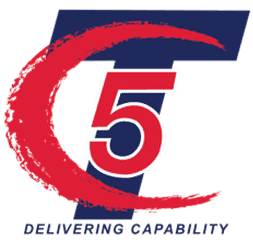Why Accessibility Widgets Don’t Deliver on Web Accessibility Goals — And What You Can Do About It
By Victoria Cook, Research Analyst
The C5T accessibility team is laying the foundation for a new way for website owners to ensure their websites are compliant and accessible to all potential users by mixing automated testing techniques with human intervention techniques.
Why Web Accessibility is Important
Compliance with web accessibility is important to every organization for two reasons: it is legally the right thing to do and increases the customer base for the company. The World Health Organization (2018) reported that more than a billion people worldwide have some form of disability. Organizations in all fields therefore ought to prioritize accessibility for such a significant portion of the population. In doing so, organizations also benefit from what is now termed “the curb cut effect”, where any design changes in consideration for those with disabilities also increases the accessibility of others. Since people with disabilities spend a half-trillion dollars annually, companies and organizations profit by following web accessibility guidelines. Reports indicate 71% of customers with accessibility needs will navigate away from a difficult-to-use website. As such, prioritizing compliance with accessibility guidelines enables organizations to better serve a substantial group of consumers.
Title III of the Americans with Disabilities Act (ADA) requires businesses and not-for-profit service providers to provide equal access for those with disabilities. However, Webaim.org reports that “98.1% of homepages had detectable WCAG 2.0 Failures”. To promote accessibility, the World Wide Web Consortium (W3C) launched the Accessibility Guidelines Working Group, which documented technical standards via the Web Content Accessibility Guidelines (WCAG). In 2018, the WCAG was adopted as the official standard for Title III. In accordance with these guidelines, commercial agencies are required to provide comparable information and communications technology access to employees or members of the public with disabilities.
In 2022, a bill was introduced by U.S. Senator Tammy Duckworth and U.S. Representative John Sarbanes, which will formalize the requirements for website and software accessibility. This announcement was greeted with open arms by the C5T Accessibility Dragon Team, who have been building compliance testing software that align with the bill’s guidelines. While no official guidance will be shared until 6 months after the bill is signed into law, the guidelines listed within the bill align with the standards the W3C has created with WCAG.
Why Widgets Should Be Avoided
Widgets on the web are mechanisms that allow users to perform actions or interact with the website in a specific way, but they can negatively affect the end user’s experience when using assistive devices. These add-ons are a popular and enticing alternative, especially when some accessibility firms employ marketing schemes based on fear, uncertainty, and doubt (FUD). Widgets insert new code into a website instead of remediating the offending code, potentially overriding existing assistive technology functions, and further limiting clients’ access to content. These “accessibility” widgets only alter portions of the presentation of the website or add in voice-to-text capabilities, often replicating browser assistive technology already in use. When this happens, the browser’s accessibility devices perform as they should upon page load, like reading titles, headers, and links to the user. Widgets that identify these settings will then start reading the content of the page to the user as well, causing two overlapping voices to be reading to the user. Rather than providing equal access to websites, these services offer fundamentally ‘separate but equal’ solutions, and more than 250 lawsuits were filed against sites using widgets. Companies using one of these tools face increasing lawsuits for incompatibility with screen readers (a kind of assistive device) because people with visual impairments have been unable to access, “normal activities online, like paying rent, teaching class or buying Christmas gifts.”
What Sets C5T Apart
C5T goes beyond the standard integration of artificial intelligence by incorporating human participation into our assessment process. Some items require human intervention to validate the nuanced accuracy of written descriptions (e.g., does each image have an alternate text equivalent that describes the image and its purpose?). For these alternative text items, our tool prompts users to verify text descriptions of a highlighted element with yes/no or multiple-choice questions. Once the user completes the review, the tool provides a report of test results that highlights areas of code not in compliance and recommends alterations for software engineers.
Hands-off testing alone can only achieve about 30% compliance. C5T’s tool guides users through their website, assessing every element on each page with either automated testing techniques or manual testing. C5T has a team of dedicated individuals who can review your website and make determinations—as opposed to just using AI to perform the task.
C5T’s Accessibility Dragon
The Accessibility Dragon tool captures each of the individual elements from a web page and analyzes them for specific attributes to ensure compliance with the relevant WCAG technique. In contrast to other web accessibility companies, C5T’s Accessibility Dragon incorporates human interventions to assess accessibility compliance and recommends specific alterations for software engineers to address noncompliant code. Our accessibility team has dedicated hundreds of hours researching the W3C’s WCAG guidelines, determining which are the most common guidelines to fail, learning how accessibility should be incorporated into all website builds, and why some things simply cannot be automated. For guidelines that can be automated, our tool runs the techniques automatically, and for all other guidelines our tool guides the user through easy-to-understand questions and highlights the element that pertains to the question. Take your first steps at AccessibilityDragon.com and take your first steps to web accessibility.

